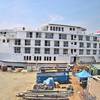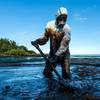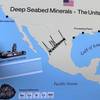Panama Canal Simulated Defence Exercise PANAMAX
Leaders of the maritime component of PANAMAX 2014 have paused about halfway through the exercise, to assess its benefits so far, informs U.S. Naval Forces Southern Command/U.S. 4th Fleet Public Affairs.
Rear Adm. Benjamin Calle of Colombia is the Combined Forces Maritime Component Commander (CFMCC) and U.S. Navy Rear Adm. Jon Matheson, the deputy commander of U.S. Naval Forces Southern Command/U.S. 4th Fleet, is deputy CFMCC for the exercise, which began Aug. 4 and is scheduled to continue through Aug. 15.
"This PANAMAX exercise is a huge event," said Calle. "It is one of the largest maritime exercises in the world, centered on protecting the Panama Canal."
Sources say that 38 to 40 ships transit the canal daily between the Pacific and Atlantic oceans, carrying some five percent of world maritime trade.
"Multinational forces have a major responsibility in protecting the Panama Canal and remaining a force in this region," said Calle. "This exercise is making sure that we do that by enhancing our interoperability forged through partnerships.
"
The main focus of PANAMAX 2014 is to exercise a variety of responses to any request from the government of Panama to protect and guarantee safe passage of traffic through the Panama Canal while respecting national sovereignty.
"We have over 320 military and civilian personnel from 15 countries participating here in Mayport," said Calle. "This has been an excellent opportunity to train with our partner nations and develop camaraderie. We have learned so much from each other.
"
In Mayport, the exercise includes approximately 80 participants from Brazil, Chile, Colombia, Costa Rica, Dominican Republic, El Salvador, France, Jamaica, Guatemala, Honduras, Mexico, Panama, Paraguay, Peru and the United States.
Matheson said that one of the challenges is overcoming language barriers, but despite - or even because of that - the effort has been rewarding.
"This exercise is a fantastic opportunity for all of us with our different perspectives to understand the challenges that are going to exist," said Matheson. "It is important because in the event of a humanitarian effort or natural disaster in our hemisphere, we will need to come together in a real-time situation.
"
One goal of PANAMAX 2014 is to develop and sustain relationships that improve the capacity of emerging partners' security forces to achieve common desired goals while fostering friendly cooperation and understanding among participating forces.
Matheson said there is an increased leadership role taken by all the partner nations. Brazil is leading the ground component, Colombia is leading the maritime component, and the Special Forces component is led by Chile.
Pictured: Operations officer Lt. j.g Daniel Minter, left, Operations Specialist 1st Class Gavin Hawthorne, Chilean navy Capt. Allan Nettle, Commander of Command Task Force, and Peruvian Capt. Christian Ponce, all members of Command Task Force 801, discuss high value target locations during PANAMAX 2014 at Naval Station Mayport.









